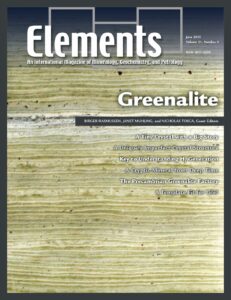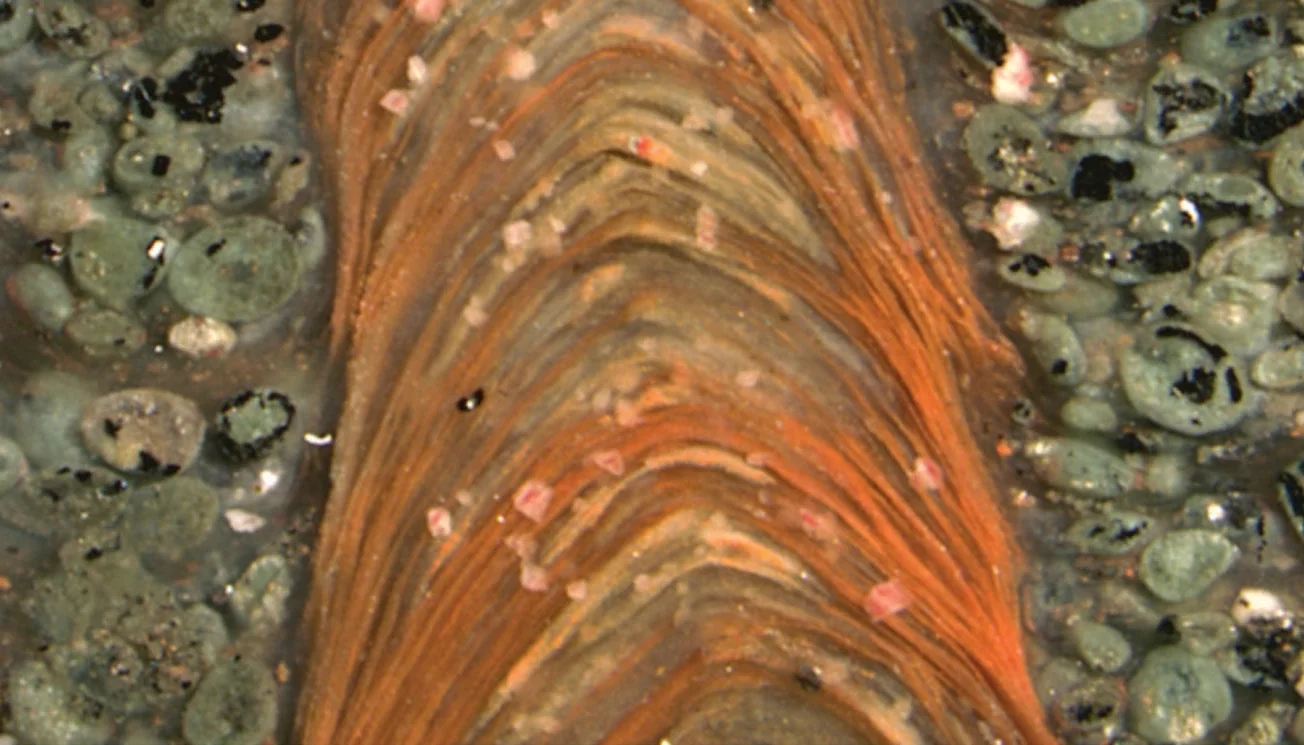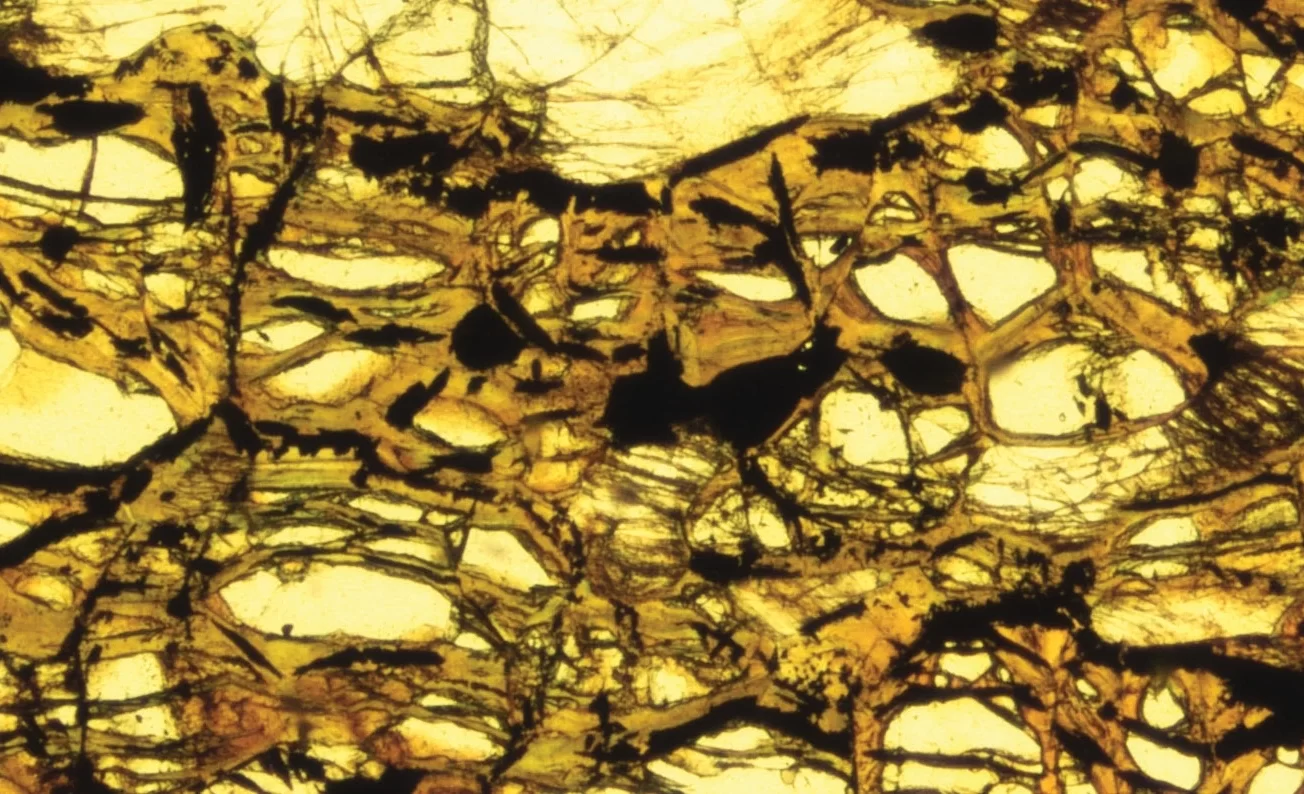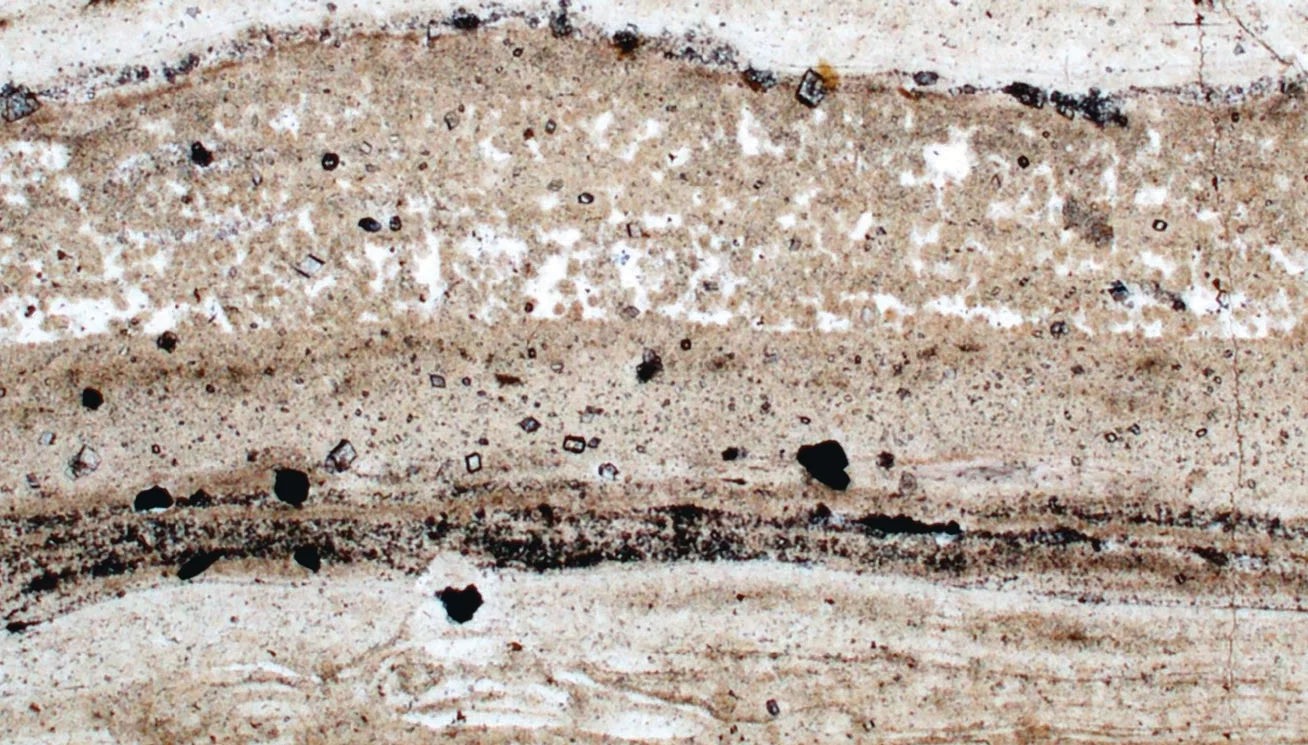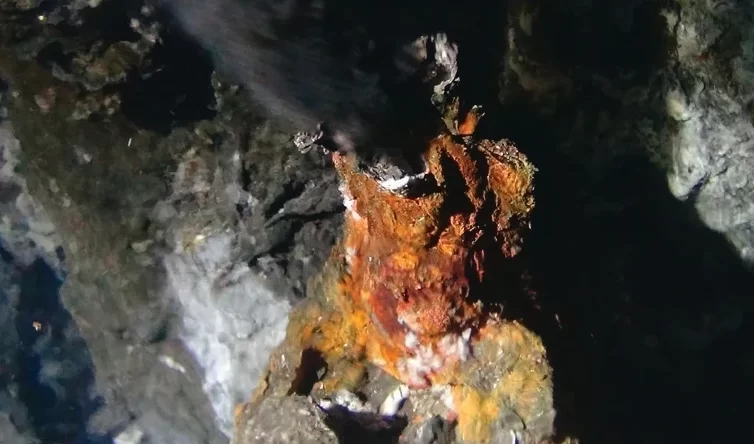Greenalite
Birger Rasmussen, Janet Muhling, and Nicholas Tosca– Guest Editors
Table of Contents
Greenalite [Fe3Si2O5(OH)4] is an Fe(II)-serpentine mineral that was first identified in Lake Superior iron formations over 100 years ago, but its true extent is only now being recognized with the advent of in-situ nanoscale techniques. In the last decade, nanoparticulate greenalite has emerged as a prime candidate in the deposition of early Precambrian banded iron formations (BIFs). Together with experiments and modeling, new light is being shed on greenalite-forming conditions and environments, challenging long-held models that argue that BIFs were deposited from seawater as biologically oxidized phases of Fe. Greenalite–hisingerite minerals also occur as alteration products in meteorites, and recent in-situ and orbital data imply that Fe-serpentines are major products of serpentinization systems on early Mars, potentially recording widespread H2 production.
- Greenalite: A Tiny Crystal with a Big Story
- Ordered but Disordered: The Peculiar Crystal Structure of Greenalite
- Serpentine Solid Solutions and Hydrogen Production on Early Earth and Mars
- Greenalite: Cryptic Mineral of Ancient Ferruginous Oceans
- The Precambrian Greenalite Factory
- Greenalite: A Template Fit for Life?
RE-OS – CLOCK WITH CLOUT
Guest Editors: Holly Stein (AIRIE, Applied Isotope Research for Industry and the Environment, USA) and Laurie Reisberg (University of Lorraine, France)
The Re-Os radiometric isotope system features two of silicate Earth’s rarest elements. This couple’s unique combination of siderophile, chalcophile, and organophile properties allows it to play an outsized role, both as a geochronometer and as a source tracer, answering questions that cannot be addressed by other radiometric systems. Successive analytical breakthroughs have led to increasingly challenging and original applications that are reviewed in this issue of Elements. The Re-Os system tells us about Earth’s accretion and the evolution of the convecting and lithospheric mantle over time. Novel applications to the Earth’s crust include dating molybdenite and a host of other sulfides and oxides, deducing paleoenvironment and paleoclimate from organic material in shales, balancing continental versus oceanic–hydrothermal input to seawater, and reconstructing complex petroleum systems.
- The Re-Os Revolution: Mighty Messages from Two of Earth’s Rarest Elements Laurie Reisberg (University of Lorraine, France) Holly Stein (AIRIE, USA)
- Sulfides and Their Little Darling, Molybdenite Holly Stein (AIRIE, USA), Aaron Zimmerman (AIRIE, USA), Gang Yang (AIRIE, USA), Rob Creaser (University of Alberta, Canada), and Katz Suzuki (JAMSTEC, Japan)
- Reel-to-Reel Re-Os Records—Earth System Transactions Preserved in Sediments Brian Kendall (University of Waterloo, Canada), Rob Creaser (University of Alberta, Canada), Judith Hannah (AIRIE, USA), Vineet Goswami (PRL, Physical Research Laboratory, India), and Gyana Tripathy (Indian Inst. of Science, Education and Research, India)
- Oil and Water – Intimate Conversations Svet Georgiev (Bulgarian Acad. of Sciences, Bulgaria) and Nicole Hurtig (New Mexico Tech, USA)
- Osmium and Tungsten Isotopes Reveal Earth’s Youthful Exuberance Igor Puchtel (University of Maryland, USA), Rich Walker (University of Maryland, USA), Sonja Aulbach (Goethe University, Germany), and Vickie Bennett (Australian National University, Australia)
- Os Isotopes—Tracing the Dynamics of Post-Archean to Modern Mantle Ambre Luguet (University of Bonn, Germany), Elisabeth Widom (Miami University, USA), and Jingao Liu (Inst. of Earth Science, China University Geosciences, China)
- Birth and Growth of Minerals from Aqueous Solutions (February 2025)
- Biomineral Geochemistry: Windows into Past Climates and Calcification (April 2025)
- Greenalite – A Tiny Crystal with a Big Story (June 2025)
- Re-Os – Clock With Clout (August 2025)
- Sample Return Throughout the Ages (October 2025)
- The Variscan Orogeny in Europe – Understanding Supercontinent Formation (December 2025)
Thematic Articles
Greenalite is a chemically simple but structurally complex sheet silicate with a general formula of Fe2+(3−x−y−z) Fe3+x Mgy □z Si2 O(3.5+x−2z) (OH)(6−x+2z) . Originally characterized as a serpentine from X-ray powder diffraction data, detailed interrogation of its structure through electron microscopy has revealed complex yet systematic disorder within tetrahedral-octahedral layers, and disorder in the stacking patterns of those layers along the crystallographic c-axis. These features arise from the misfit in lateral dimensions between oxygens coordinating relatively large Fe2+ octahedra and those forming the basal plane of Si tetrahedra, and result in a composition that deviates significantly from that of an ideal serpentine-group mineral. Continued interrogation of greenalite’s structure and chemistry will be fundamental to resolving problems related to its formation and stability in natural systems.




